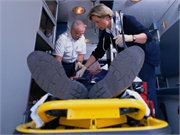However, disparities in access to treatments, such as alteplase, and outcomes persist
TUESDAY, May 5, 2020 (HealthDay News) — In the last decade, there has been a shift toward care in certified stroke centers for rural residents with acute ischemic stroke and transient ischemic attack, according to a study published online May 4 in JAMA Neurology.
Andrew D. Wilcock, Ph.D., from the University of Vermont in Burlington, and colleagues analyzed claims for beneficiaries of traditional fee-for-service Medicare (2008 through 2017) to identify admissions for a transient ischemic attack or acute stroke among patients with traditional Medicare. The final sample included 3.47 million admissions (58 percent women; mean age, 78.6 years).
The researchers found that in 2008, of patients cared for at a certified stroke center, 25.2 percent were in rural areas and 60.6 percent were in urban areas. This disparity dropped from −35.4 percent in 2008 to −26.6 percent in 2017. The rural-urban disparity in neurologist evaluation during admission also narrowed to 6.3 percent. However, for receipt of alteplase, the rural-urban disparity widened or was similar (0.5 percent), as did mean days in an institution from admission (0.5 days) and mortality at 90 days (0.3 percent).
“More focus is needed on reducing long-standing rural-urban disparities in high-quality stroke care and patient outcomes,” the authors write.
Copyright © 2020 HealthDay. All rights reserved.








